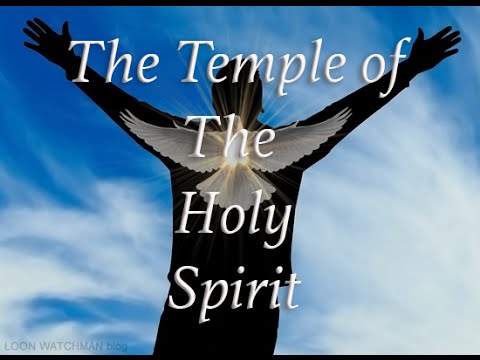I’ve spent the last few weeks thinking about Paul’s language in 1 Corinthians concerning the body, the temple, and the Holy Spirit. The primary texts are fairly well-known for Bible readers.
“Do you not know that you are God’s temple and that God’s Spirit dwells in you? If anyone destroys God’s temple, God will destroy him. For God’s temple is holy, and you are that temple.”
(1 Corinthians 3:15–17 ESV)
“Flee from sexual immorality. Every other sin a person commits is outside the body, but the sexually immoral person sins against his own body. Or do you not know that your body is a temple of the Holy Spirit within you, whom you have from God? You are not your own, for you were bought with a price. So glorify God in your body.”
(1 Corinthians 6:18–20 ESV)
From these verses Christians have been fond of identifying their own bodies as individual temples of the Holy Spirit. As in, “Hey, quit smoking. Your body is a temple of the Spirit.” Likewise, it is in light of these verses that Christians have also long been fond of saying that the church is not a building. Church is built up by the people that together form the temple of the Holy Spirit.
Notice that in these examples, the temple is understood on both an individual level and on a collective level. Because of the seeming flexibility of this image, pastors and scholars alike have been comfortable with a both/and explanation for Paul’s body-temple language. And while the both/and explanations work fine enough in most circumstances, it starts to break down here when you poke around and are actually forced to answer the question, “well then, how many temples are there?”
Do we number temples of the Spirit in the order of millions (depending on how many Christians are numbered in the world today)? And if so, how does this work? If each Christian’s body is a temple, do the individual temples in my house drive down the street on Sundays to join with other individual temples to form the slightly bigger temple that is Trinity Church in Orange, California? To use an example from my childhood, would this then work like the show Voltron (or perhaps Power Rangers) that involve individual robot warriors that combine together to form one mega giant robot warrior?
We get part of the way to a clearer understanding by the simple recognition that Paul is writing a letter to the entire Corinthian church, not simply an individual. He is exhorting them all to come together in unity and that they realize the importance of their fellowship with Christ. This strengthens an argument in favor of seeing the body and temple imagery as retaining a preeminently corporate sense. The language of the “Spirit dwelling in you” is then better understood as a dwelling “among you all” or “within your midst.” But understanding the context of unity and the plurality of members only begins the analysis, the rest of which I can only briefly summarize.
I’ve come to understand that it is far more satisfying to understand Scripture speaking of the temple thoroughly in the singular, collective sense which can nevertheless possess the potential for individual application. There is only “one Spirit” and “one body” into which Paul makes clear that our individual “bodies are members of Christ (1 Cor” 6:15) into whom we are baptized (1 Cor 12:12-13). To use John’s language, there is then only one true spiritual temple which can be said is the “temple of his body” and that is Jesus Christ (Jn 2:21). And to use Peter’s language, we are best understood as “living stones that are built up into a spiritual house” (1 Pet 2:5). Of course the individual believer can be described as having the Spirit indwell a believer “in their hearts” in a deeply personal sense. But beyond this, it is harder to establish that the individual is “the temple of the Holy Spirit” in any self-subsistent or independent sense.
Importantly this language in 1 Corinthians taps into a larger tradition within the New Testament of speaking of the temple of God in terms of people, a temple “not made by hands,” and one in which Christ, the apostles, leaders, and believers are variously described in terms of the living architecture of God’s temple (whether as cornerstone, foundation, ramparts, pillars, or living stones). (see, e.g., 2 Cor 5:1; Heb 9:11; Gal 2:9). I’ll leave to one side the discussion of whether this language is necessarily supersessionist insofar as it replaces the Jerusalem Temple (I’ll simply note that I do not believe that this infers a replacement of the physical temple. There’s space both for the temple and the house of God not made by hands.).
Pastorally, much is not at stake if one holds dearly to the both/and position (and I still remain open to be convinced). Indeed, if Jesus says that “I and the Father will make my abode with [anyone who loves me and keeps my word]” (Jn 14:23), and if the Spirit of Christ dwells within those who are in Christ Jesus (Rom 8:1, 14), it is not a far leap from here to deem the individual a temple of the Spirit and act accordingly in living worship to God. My main concern is to keep the language of Scripture consistent — and Scripture never speaks of a plurality of temples in quite this way. Even Josephus and Philo, who knew of the Temple of Leontopolis, where sacrifices were maintained outside the Jerusalem Temple, spoke without irony that “we have but one temple for one God.” (Josephus, Contra Apionem, 2.193; see also, Philo, Laws, 1:67 (“as God is one, his temple also should be one.”). There may be “temples” in a qualified sense, but there really is only “one Temple of the one God.” We may regard ourselves as temples, provided that we recognize the one true temple which pertains to Christ himself. As a flame can be shared with 10,000 other torches without diminishment of the original fire, so the Spirit can indwell a multitude of believers and remain one singular Spirit inhabiting one temple of God’s presence, now located in the person of Christ.
The real conceptual difficulties tend to arise only when one insists on a starkly individualistic understanding of the person operating within a unduly bounded anthropology. An individual-corporate either/or scenario only presents itself as an impasse in these verses when one fails to conceive of him or herself as inextricably intertwined to another (in this case, how one is bound to Christ and the brothers and sisters who are together members of him by baptism). This was the topic of another blog post [here].
“Now you are the body of Christ and individually members of it.” (1 Corinthians 12:27 ESV)
Suggested Reading for Further Study:
Morna Hooker, “‘The Sanctuary of his Body’: Body and Sanctuary in Paul and John,” 39 JSNT no. 4 (2017): 347-61.
Nijay Gupta, “Which Body is a Temple (1 Corinthians 6:19)?: Paul Beyond the Individual/Communal Divide,” 72 CBQ no. 3 (2010), 518-36.





Leave a Reply
Your email is safe with us.